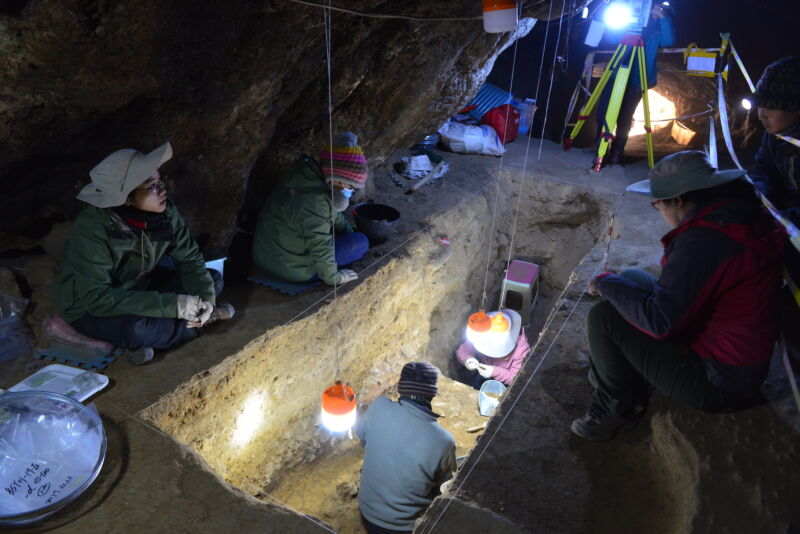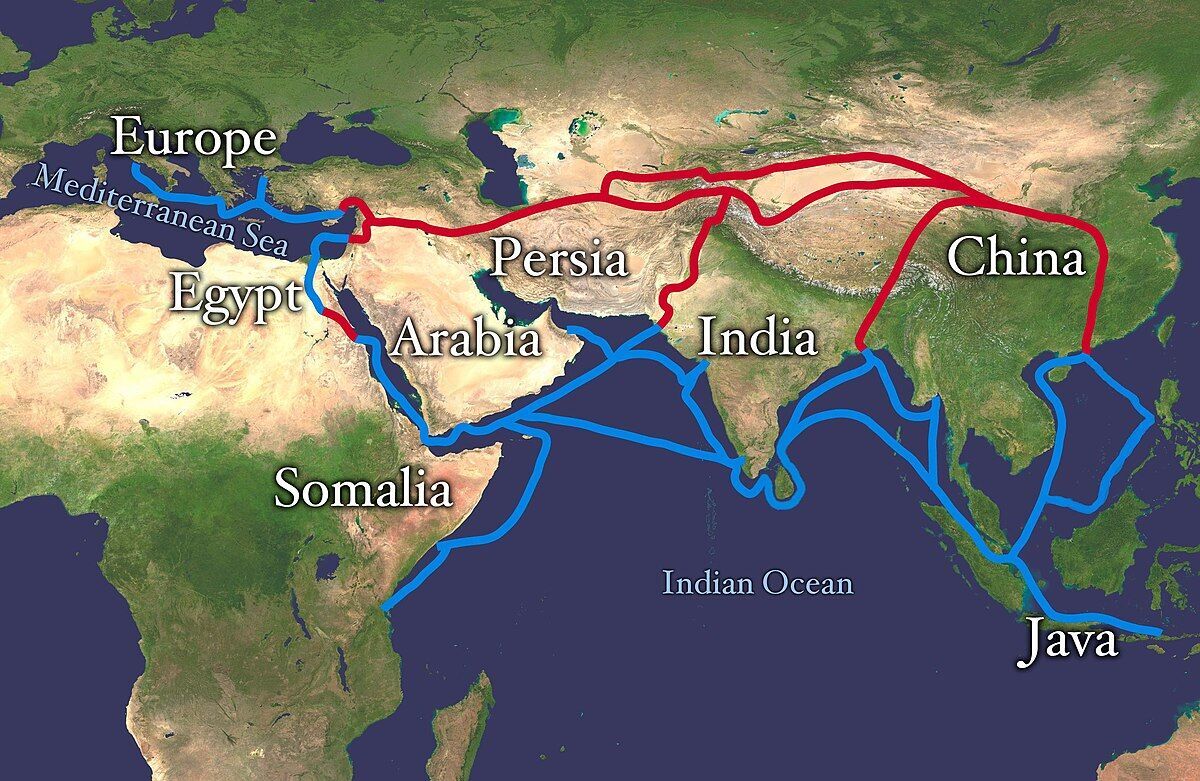(HOME TO THE ANCIENTS SECRET CHIEFS)
JOHN TIMMER - 10/29/2020
Enlarge / These excavations identified Denisovan DNA within the sediment.
Dongju Zhang, Lanzhou University
The Denisovans occupy a very weird place in humanity's history. Like the Neanderthals, they are an early branch off the lineage that produced modern humans and later intermingled with modern humans. But we'd known of Neanderthals for roughly 150 years before we got any of their DNA sequence and had identified a set of anatomical features that defined them. By contrast, we had no idea that Denisovans existed until their DNA turned up unexpectedly in a single, tiny piece of finger. And, to this day, we've not identified enough remains to really say anything about what they looked like.
But, over time, we've gotten increasing ancient DNA samples that are providing a clearer picture of our interactions with this enigmatic lineage. Now, two new reports describe ancient DNA that provides some more details. One paper describes a modern human genome from Asia that dates to closer to the time when interbreeding must have taken place. It provides further evidence that there were at least two instances of interbreeding, and it helps clarify how early human populations moved around Asia. The second confirms that Denisovans were living along the Tibetan Plateau and may have adapted to high altitudes.
The Mongolian skull
Back in 2006, mining in Mongolia's Salkhit Valley turned up the top of a skull that was clearly old. But, because it didn't have any definitive features, people argued over whether it might be Neanderthal or Homo erectus. However, preliminary DNA sequencing indicated it belonged to a modern human, with carbon-dating placing its age at roughly 34,000 years old.
That's actually a critical period in humanity's history. At this time, there were distinct East Asian and East Eurasian (or Siberian) populations, with the latter being somewhat related to West Eurasians. Their histories are phenomenally complicated. A 40,000-year-old skeleton from near Beijing is clearly closest to modern East Asians but is most closely related to a skeleton found in Belgium (!??!?). A 45,000-year-old Siberian skeleton doesn't seem to have any modern relatives, while a 24,000-year-old individual from the same region identified with the population that mixed with East Asians to produce the ancestors of Native Americans. But two other Siberian skeletons from roughly the same time period don't show that affinity and just look generally Eurasian.
If you're not confused after that, go back and read it again.
Given that mess, any further DNA from that era and area could be useful. So, the researchers did what has become a standard procedure for handling DNA this old. They first looked for sequences that matched human DNA to pull out all human-like sequences. To eliminate contamination from modern humans, they then searched for signs of the most common damage that occurs as DNA ages. Anything that was clearly human and damaged was used to put together a genome.
The end result was about what you'd expect, given the skull top's age. Most of the variations in the DNA matched those of modern humans, but there were a number of regions that matched Neanderthals and Denisovans. The modern human portions most closely matched East Eurasian and Native American populations, which confirms the earlier results.
So much breeding
But it's still nearly as confusing as it was previously. "The [newly described] Salkhit individual shares as many alleles with the Tianyuan [Beijing] individual as with the ~31,000-year-old Yana individuals from northeastern Siberia," the researchers write, "yet the Tianyuan and Yana individuals share fewer alleles with each other than with the Salkhit individual." Overall, the researchers conclude that, sometime after Western and Eastern Eurasian populations separated, there was some interbreeding between Eastern Eurasians and East Asians.
But of course, the newly described Siberian DNA has a remarkable similarity to the skeleton from Belgium, suggesting that at least some West Eurasian DNA was still being brought back into the lineage.
The other ancients
As far as Neanderthals go, the new Siberian skeleton is pretty typical of modern Asian populations, with about 1.7 percent of its DNA coming from Neanderthals. Denisovan content is harder to judge, but the researchers detected 18 large stretches of DNA that had been inherited from Denisovans. The size of these led researchers to conclude that the interbreeding had gone on roughly 10,000 years earlier. That's consistent with the complete absence of Denisovan DNA in the 45,000-year-old Siberian skeleton. And the Denisovan DNA that is present is more consistent with the amount seen in later East Asian skeletons.
One interesting thing here is that the segments present in the new Salkhit genome have no overlap with the segments found in the genomes of modern people in Southeast Asia and the Pacific. The obvious conclusion from this is that modern humans intermingled with Denisovans on at least two distinct occasions. That's something that had been indicated by other results, but modern East Asians have DNA from both of these events. The Salkhit genome provides a clear separation between them.
Meanwhile, a separate paper looks at where the Denisovans were living—specifically at the Baishiya Karst Cave on the edge of the Tibetan Plateau. At well over 3,000 meters (nearly 11,000 feet) above sea level, this was very much a high-altitude environment, which would have been a difficult place to make home during the last glacial period. Yet a portion of a jaw bone had been found there. While it didn't yield any DNA, protein fragments indicated the jaw belonged to a Denisovan.
DNA from dirt
Most ancient DNA samples are heavily contaminated by bacteria, with badly damaged and fragmented DNA. As a result, researchers have developed various procedures to help them separate out human-like DNA and then recognize ancient DNA based on the pattern of damage it accumulates. Gradually, it has been realized that these same techniques can work even where contamination is higher and human sequence even more rare: soil samples. So, while we couldn't get DNA out of the jaw bone, a team decided that there might be some left in the environment it came from.
So, the team dug through the sediments on the cave floor, dating different layers in order to make an estimated chronology. Most of the layers had mammalian DNA that, based on the damage, was quite old. So, the researchers pulled out the human mitochondrial DNA and started sequencing that. It was clearly Denisovan, with a slight possibility of a small fraction of modern human DN
Overall, there are signs of Denisovan occupancy from over 100,000 years ago up to as recently as about 30,000 years ago. That's an extensive history of occupancy, though we can't know whether it was constant, seasonal, or sporadic. Regardless, 70,000 years is certainly enough time, the researchers point out, to adapt to the high altitude. And that turns out to be consistent with another genetic finding: that some of the Tibetan's genetic adaptations to high altitude are inherited from Denisovans.
Science, 2020. DOI: 10.1126/science.abc1166, 10.1126/science.abb6320 (About DOIs).
JOHN TIMMER became Ars Technica's science editor in 2007 after spending 15 years doing biology research at places like Berkeley and Cornell. 














